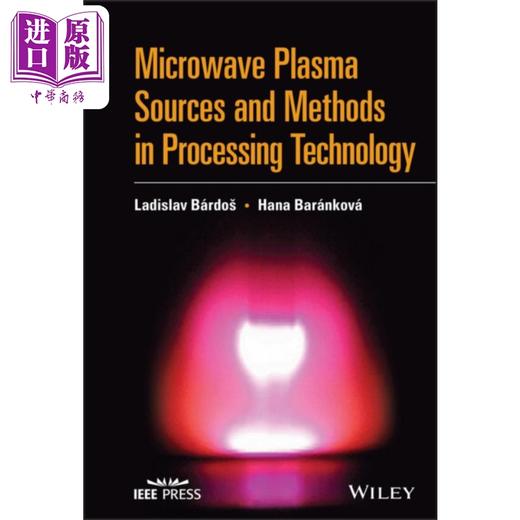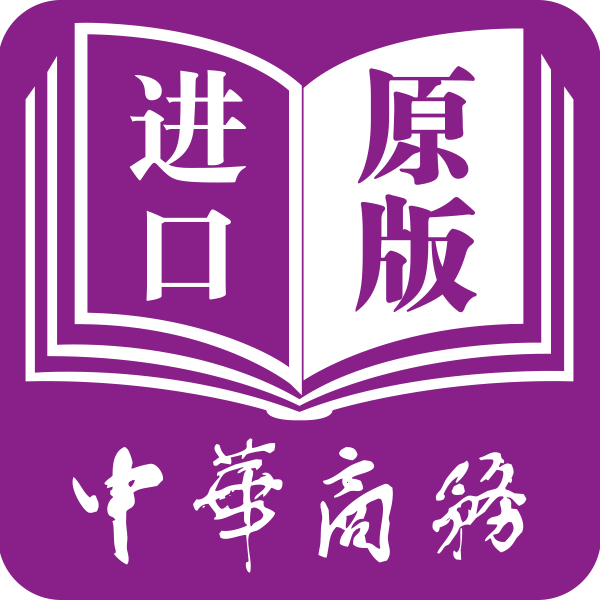【中商原版】微波等离子体源及加工技术方法 Microwave Plasma Sources In Processing Technology 英文原版 Ladislav Bardos
| 运费: | ¥ 5.00-30.00 |
| 库存: | 1 件 |
商品详情
微波等离子体源及加工技术方法 Microwave Plasma Sources And Methods In Processing Technology
基本信息
Format:Hardback 208 pages
Publisher:John Wiley & Sons Inc
Imprint:Wiley-IEEE Press
ISBN:9781119826873
Published:4 Mar 2022
Weight:454g
页面参数仅供参考,具体以实物为准
书籍简介
微波等离子体在各种压力下加工应用的实用介绍
在《微波等离子体源和加工技术方法》中,作者全面介绍了微波和微波产生的等离子体。本书非常适合对非热气体放电等离子体及其应用感兴趣的任何人,其中包含有关微波功率、微波元件、等离子体和等离子体产生的研究和使用的详细描述、解释和实用指南。
该参考资料包括 130 多个全彩图表,以说明其中讨论的概念。杰出的作者讨论了在不同功率水平下产生的等离子体,以及它们在低压、大气压和高压下的应用。他们还描述了液体内部的等离子体以及等离子体与燃烧火焰的相互作用。
《微波等离子体源和加工技术方法》深入探讨了微波放电研究和应用的新趋势,提供了有希望的新研究领域。
本书还包括:
• 全面介绍微波技术和电力系统的基本原理,包括技术历史、微波发生器、波导和波传播
• 全面探索气体放电等离子体的物理基础,包括等离子体生成、汤森系数和帕申曲线
• 等离子体与固体表面和气体之间相互作用的实际讨论,包括 PVD、PE CVD、氧化、溅射、蒸发、干蚀刻、表面活化和清洁
• 深入研究微波等离子体系统在不同参数下的等离子体处理
《微波等离子体源和加工技术方法》非常适合微波社区的研究人员和工程师以及从事等离子体应用的人员,也将在研究工程物理、微波工程和等离子体的研究生和博士生图书馆中占有一席之地。
A practical introduction to microwave plasma for processing applications at a variety of pressures
In Microwave Plasma Sources and Methods in Processing Technology, the authors deliver a comprehensive introduction to microwaves and microwave-generated plasmas. Ideal for anyone interested in non-thermal gas discharge plasmas and their applications, the book includes detailed descriptions, explanations, and practical guidance for the study and use of microwave power, microwave components, plasma, and plasma generation.
This reference includes over 130 full-color diagrams to illustrate the concepts discussed within. The distinguished authors discuss the plasmas generated at different levels of power, as well as their applications at reduced, atmospheric and higher pressures. They also describe plasmas inside liquids and plasma interactions with combustion flames.
Microwave Plasma Sources and Methods in Processing Technology concludes with an incisive exploration of new trends in the study and application of microwave discharges, offering promising new areas of study.
The book also includes:
• A thorough introduction to the basic principles of microwave techniques and power systems, including a history of the technology, microwave generators, waveguides, and wave propagation
• A comprehensive exploration of the fundamentals of the physics of gas discharge plasmas, including plasma generation, Townsend coefficients, and the Paschen curve
• Practical discussions of the interaction between plasmas and solid surfaces and gases, including PVD, PE CVD, oxidation, sputtering, evaporation, dry etching, surface activation, and cleaning
• In-depth examinations of microwave plasma systems for plasma processing at varied parameters
Perfect for researchers and engineers in the microwave community, as well as those who work with plasma applications, Microwave Plasma Sources and Methods in Processing Technology will also earn a place in the libraries of graduate and PhD students studying engineering physics, microwave engineering, and plasmas.
作者简介
Ladislav Bardos 是乌普萨拉大学电气工程系的教授。他于 1978 年获得捷克科学院等离子体物理研究所的博士学位。1995 年,他获得了布拉格查理大学的高科学学位 DrSc。1984 年,他因其研究成果荣获捷克斯洛伐克国家奖。2019 年,他荣获 EPS 等离子体物理创新奖。Bardos 教授设计、开发并获得了多种工业应用的等离子体源的专利。他是美国真空镀膜协会的活跃成员,也参与了美国 AVS 和 ECS 的组织委员会。
Hana Barankova 是乌普萨拉大学电气工程系的教授。她是等离子体组的研究负责人,也是许多新型等离子体源和工艺的共同发明者。Barankova 教授是美国真空镀膜协会的董事会秘书。她在设计、构建和应用各种放电过程和反应器方面拥有丰富的经验。她曾荣获美国真空镀膜协会颁发的导师奖,并因等离子体物理研究的技术、工业和社会应用而荣获欧洲物理学会颁发的 2019 年等离子体物理创新奖。她在乌普萨拉大学和国外教授多门与放电等离子体相关的课,并指导研究生。20 多年来,她每年在美国教授 3 门有关等离子体源和应用的课。
Ladislav Bardos is a Professor at the Department of Electrical Engineering at Uppsala University. He received his PhD from the Institute of Plasma Physics at the Czech Academy of Sciences in 1978. In 1995 he obtained the highest scientific degree DrSc from Charles University in Prague. In 1984 he was awarded the Czechoslovak State Prize for his research achievements. In2019 he was awarded The EPS Plasma Physics Innovation Prize. Prof. Bardos designed, developed and patented several plasma sources for industrial applications. He is an active member of the Society of Vacuum Coaters in the U.S. and is also involved in the organization boards of AVS and ECS in the U.S.
Hana Barankova is a Professor at the Department of Electrical Engineering, Uppsala University. She is a research leader of the Plasma Group and co-inventor of a number of new plasma sources and processes. Prof. Barankova is Secretary of the Board of Directors at the Society of Vacuum Coaters in the US. She has a long experience in design, construction and applications of different discharge processes and reactors. She is a recipient of the Mentor Award by the Society of Vacuum Coaters (US) and was awarded the Plasma Physics Innovation Prize 2019 by the European Physical Society for technological, industrial and societal applications of research in plasma physics. She teaches several courses related to discharge plasmas, both at the Uppsala University and abroad, and supervises graduate students. For more than 20 years she has been teaching 3annual courses on plasma sources and apps in the US.
Ladislav Bardos is a Professor at the Department of Electrical Engineering at Uppsala University. He received his PhD from the Institute of Plasma Physics at the Czech Academy of Sciences in 1978. In 1995 he obtained the highest scientific degree DrSc from Charles University in Prague. In 1984 he was awarded the Czechoslovak State Prize for his research achievements. In2019 he was awarded The EPS Plasma Physics Innovation Prize. Prof. Bardos designed, developed and patented several plasma sources for industrial applications. He is an active member of the Society of Vacuum Coaters in the U.S. and is also involved in the organization boards of AVS and ECS in the U.S.
Hana Barankova is a Professor at the Department of Electrical Engineering, Uppsala University. She is a research leader of the Plasma Group and co-inventor of a number of new plasma sources and processes. Prof. Barankova is Secretary of the Board of Directors at the Society of Vacuum Coaters in the US. She has a long experience in design, construction and applications of different discharge processes and reactors. She is a recipient of the Mentor Award by the Society of Vacuum Coaters (US) and was awarded the Plasma Physics Innovation Prize 2019 by the European Physical Society for technological, industrial and societal applications of research in plasma physics. She teaches several courses related to discharge plasmas, both at the Uppsala University and abroad, and supervises graduate students. For more than 20 years she has been teaching 3annual courses on plasma sources and apps in the US.
部分目录,仅供参考
Foreword from the Authors ix
1 Basic Principles and Components in the Microwave Techniques and Power Systems 1
1.1 History in Brief – From Alternating Current to Electromagnetic Waves and to Microwaves 1
1.2 Microwave Generators 3
1.3 Waveguides and Electromagnetic Modes in Wave Propagation 5
1.3.1 The Cut-off Frequency and the Wavelength in Waveguides 7
1.3.2 Waveguides Filled by Dielectrics 9
1.3.3 Wave Impedance and Standing Waves in Waveguides 10
1.3.4 Coaxial Transmission Lines 12
1.3.5 Microwave Resonators 14
1.4 Waveguide Power Lines 14
1.4.1 Magnetron Tube Microwave Generator 16
1.4.2 Microwave Insulators 16
1.4.3 Impedance Tuners 17
1.4.4 Directional Couplers 19
1.4.5 Passive Waveguide Components – Bends, Flanges, Vacuum Windows 20
1.4.6 Tapered Waveguides and Waveguide Transformers 22
1.4.7 Power Loads and Load Tuners 23
1.4.8 Waveguide Phase Shifters 25
1.4.9 Waveguide Shorting Plungers 25
1.4.10 Coupling from Rectangular to Circular Waveguide: Resonant Cavities for Generation of Plasma 26
1.5 Microwave Oven – A Most Common Microwave Power Device 28
References 33
2 Gas Discharge Plasmas 37
2.1 Basic Understanding of the Gas Discharge Plasmas 37
2.2 Generation of the Plasma, Townsend Coefficients, Paschen Curve 40
2.3 Generation of the Plasma by AC Power, Plasma Frequency, Cut-off Density 43
2.4 Space-charge Sheaths at Different Frequencies of the Incident Power 50
2.5 Classification of Gas Discharge Plasmas, Effects of Gas Pressure, Microwave Generation of Plasmas 55
2.5.1 Classification of Gas Discharge Plasmas 55
2.5.2 Effects of the Gas Pressure on Particle Collisions in the Plasma 58
2.5.3 Microwave Generation of Plasmas 61
References 64
3 Interactions of Plasmas with Solids and Gases 67
3.1 Plasma Processing, PVD, and PE CVD 67
3.2 Sputtering, Evaporation, Dry Etching, Cleaning, and Oxidation of Surfaces 72
3.3 Particle Transport in Plasma Processing and Effects of Gas Pressure 75
3.3.1 Movements of Neutral Particles 76
3.3.2 Movements of Charged Particles 77
3.3 Effect of the Gas Pressure on the Plasma Processing 79
3.4 Afterglow and Decaying Plasma Processing 81
References 83
4 Microwave Plasma Systems for Plasma Processing at Reduced Pressures 85
- 中商进口商城 (微信公众号认证)
- 中商进口商城为香港联合出版集团旗下中华商务贸易公司所运营的英美日韩港台原版图书销售平台,旨在向内地读者介绍、普及、引进最新最有价值的国外和港台图书和资讯。
- 扫描二维码,访问我们的微信店铺
- 随时随地的购物、客服咨询、查询订单和物流...










